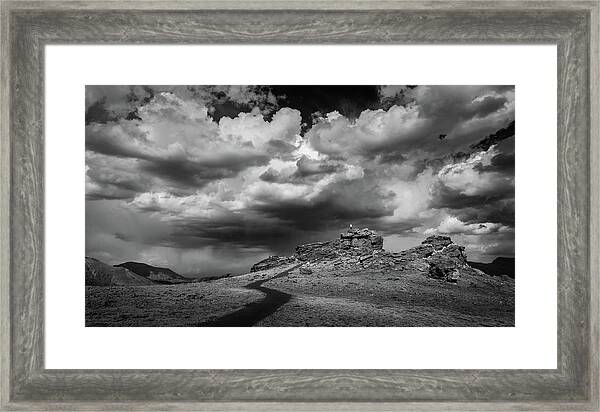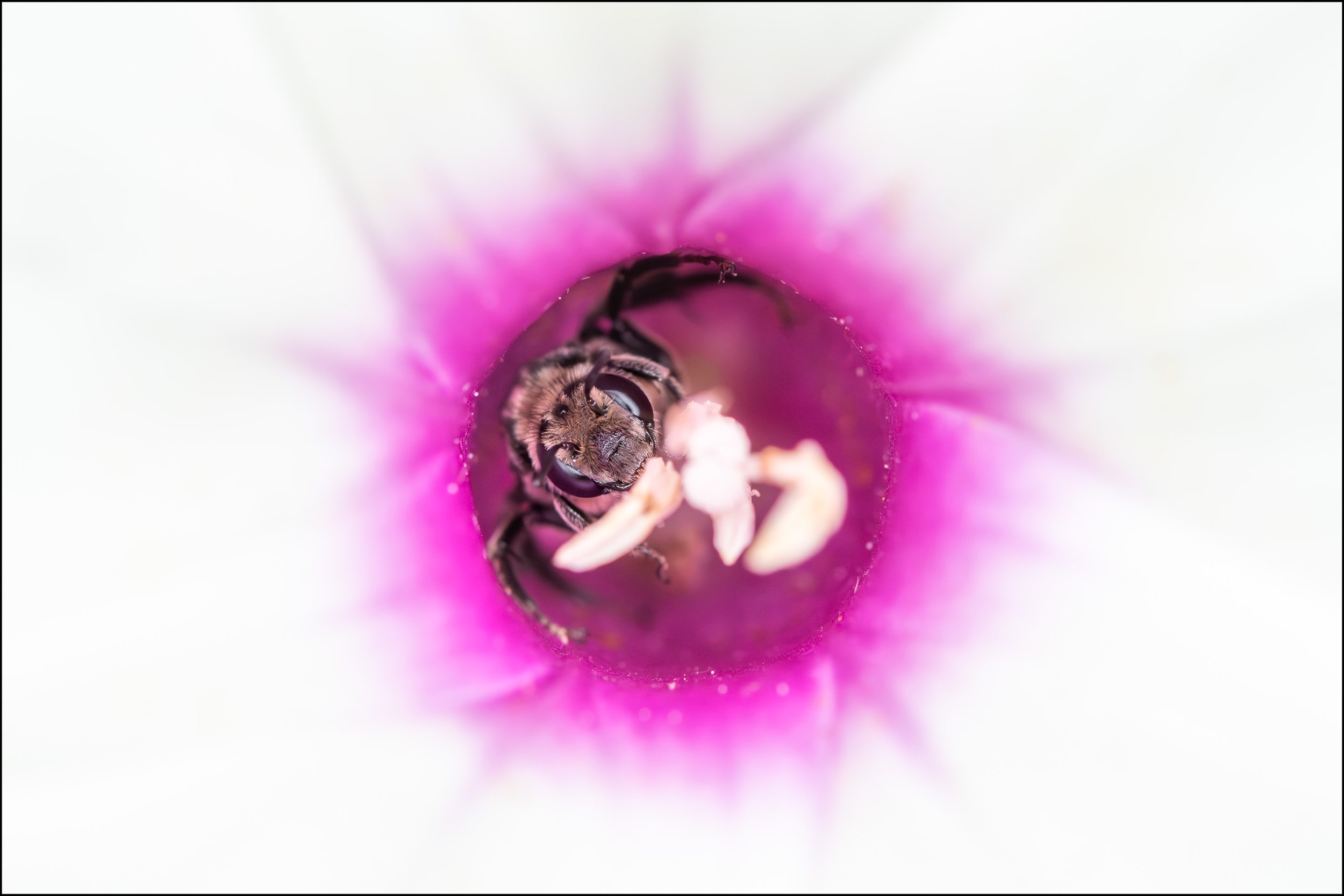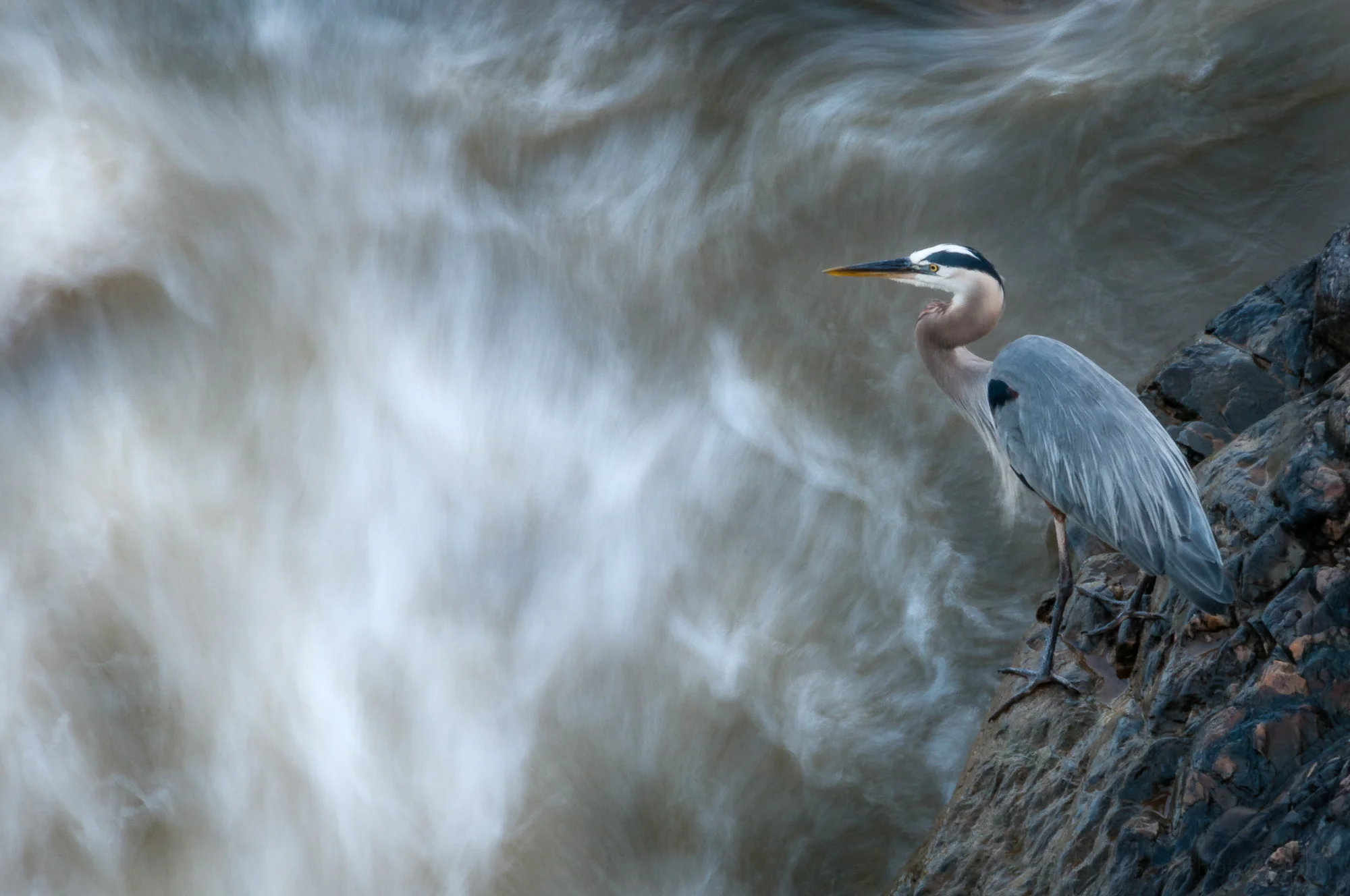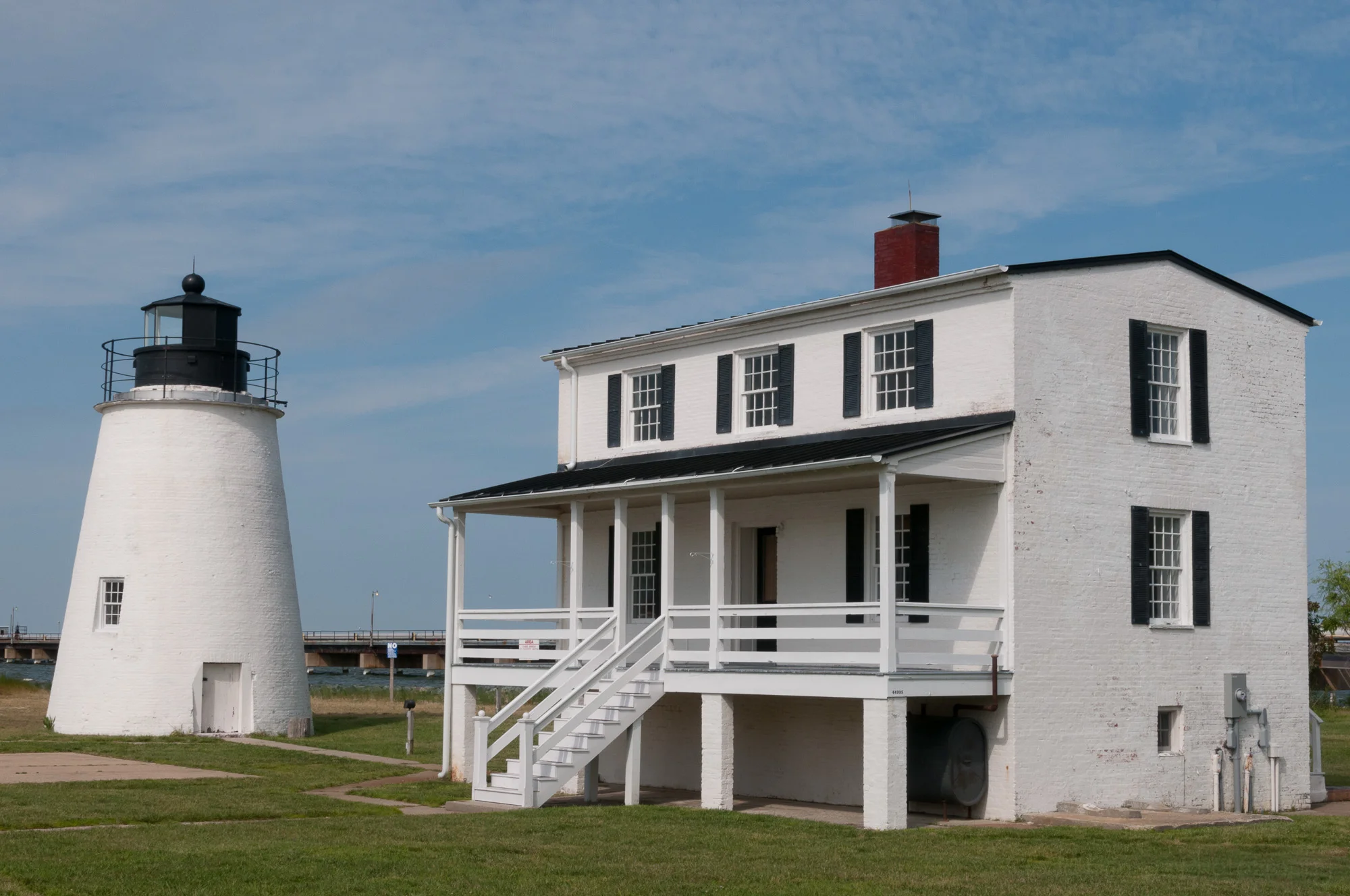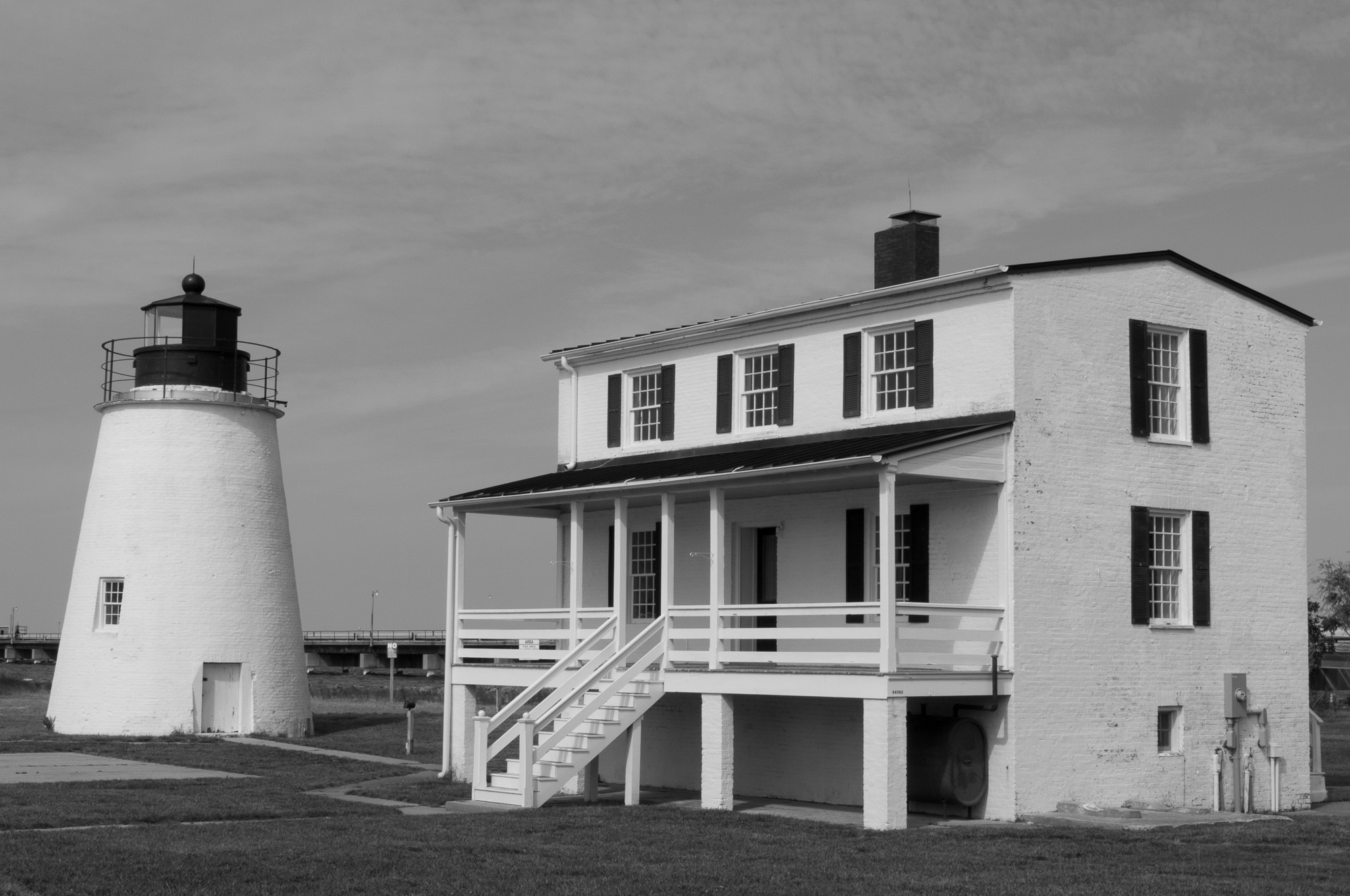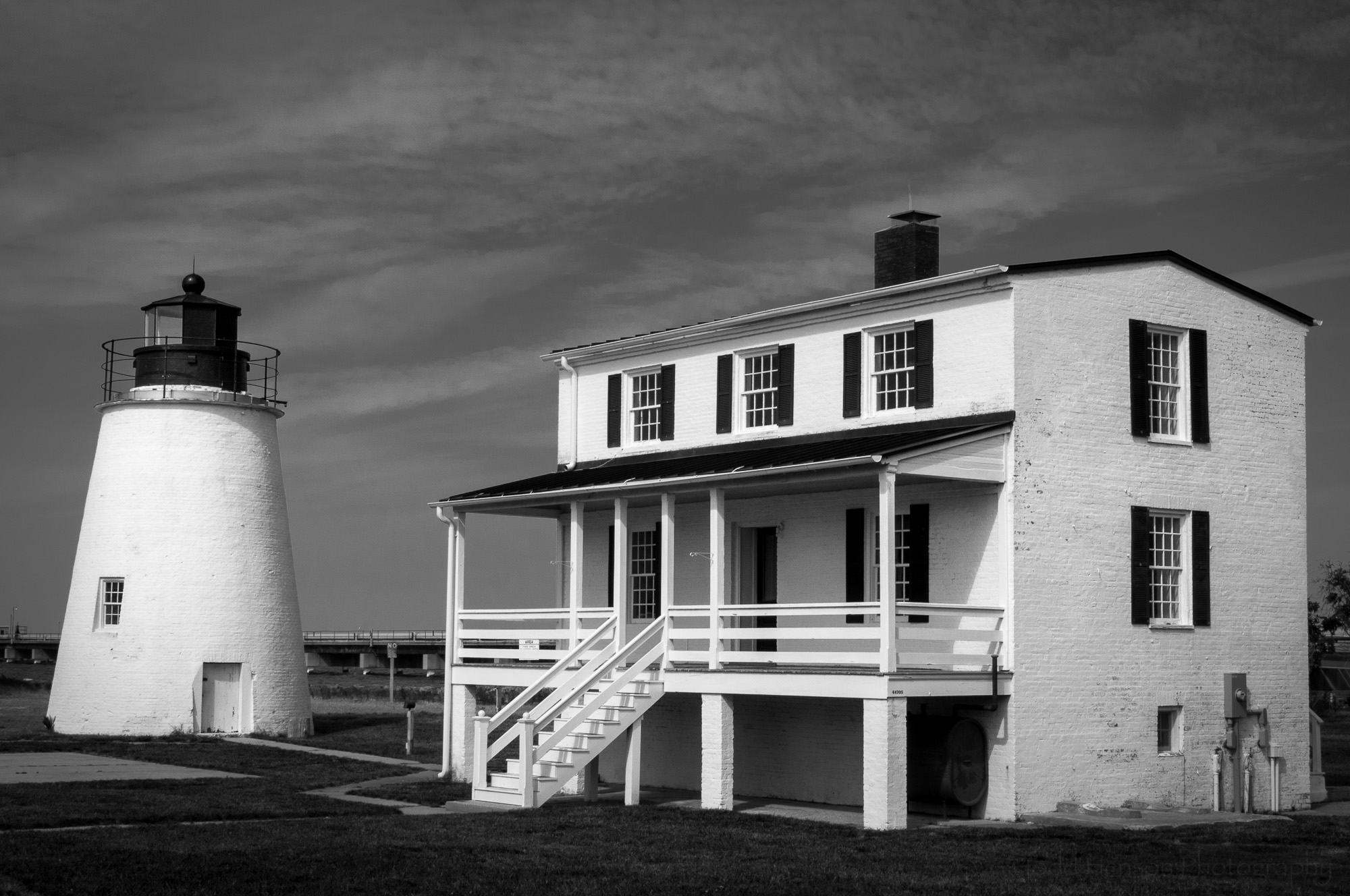Facing the Storm, Rocky Mountain National Park (black and white)
Story
Facing the Storm is an image I created while on vacation in Rocky Mountain National Park. The location is the end of the Tundra Communities Trail, which starts at Rock Cut just off Trail Ridge Road. The entire trail is paved and is a one-way in and back trail. The rock formations seen in the image are the end of the trail.
Tundra Communities Trail is a reasonably short trail, only 1 mile round trip to the rock formations and back. And the elevation change is only 200 feet. But I have to admit this trail completely wore me out. I spend most of my time on the east coast at sea level. This trail is at an elevation of over 12000 feet. That’s more than 2 and a quarter miles above sea level. I knew the air was thinner at those elevations, but not having been at them very often I’d forgotten just how much of a difference it makes. I was constantly stopping and catching my breath on the half mile hike up the tundra. This was a reminder I could use a little more exercise in my routine.
It was a beautiful trail surrounded by tundra, with flowers of various kinds blooming here and there. I could have spent far more time here than I did, but I only had one day, so I had to keep moving. I was fortunate the sky was full of interesting cloud formations, and storms could be seen in the distance. Rain was expected in this area, but it held off for the time I was there.
When I had almost reached the end of the trail, I stopped to take in the fantastic view and create a few photographs. I was most drawn to the sky and the storms in the distance. I loved the look of those storms against the rock formations. There were several people on top of the rock formations, and I was ok with that. Sometimes having a person in an image can help create a sense of scale.
Facing the Storm, unprocessed raw color photo, straight out of camera
The unprocessed raw color image gives a good indication of how the scene looked to my eyes. Unprocessed raw images straight out of the camera are often a little flat and this image shows that. It hasn’t yet had the processing applied to it that cameras automatically apply to JPEG images. That’s why we import raw images into software, to allow us to control how the image is processed instead of allowing the camera to do it for us.
I knew I would try converting many of the images I made to black and white, so I was most focused on the light, the texture of the rocks, and the tonal values of the scene and how they would translate to different values of grey. I smiled when the person with the white shirt climbed to the top of the rocks. I knew the white shirt would stand out nicely in a black and white conversion, and I loved how he was facing the direction of the storms. I imagined this lone individual, standing alone on the rocks, facing the storm and contemplating his life. Of course, there were other people on the rocks, but their clothing was darker and wouldn’t stand out quite as much. I’d have to wait and see how the photo looked after converting it to black and white.
After creating a few images I continued my hike to the rock formations, climbed to the top to see the view from there, and then slowly wandered back down to the car. The focus of this story is on this specific scene, but the location has much more to offer. As I mentioned earlier, the tundra can be covered in little flowers depending on the time of year. And I was fortunate on the hike back down to watch and photograph a group of elk walking along the ridge line very near by, close enough to get good images with my 70-200mm lens. Back at the trailhead, just across the road, is a sharp rocky drop off that is home to American pika and yellow-bellied marmots.
This is a location and a hike I highly recommend to anyone visiting Rocky Mountain National Park. The entire park is just stunningly beautiful. It’s difficult to find words to convey just how remarkable this park is. And I was only there for one day. I could have spent weeks wandering through the park. Go visit if you have the opportunity.
Post-Processing
When I finally returned home it was time to open and process the raw images. I was looking for something bold, something that really showed off the texture of the rocks and the foreboding storm in the distance. I had captured the person with the white shirt facing towards the storm, so Facing the Storm seemed an obvious title for the image. I liked having the person standing atop the rocks, giving a little scale, with the winding curve of the trail leading right to the formation he’s standing on.
I usually do all my processing in Lightroom (or Aperture back in the day), but occasionally I will use a plugin package. For this particular image I used Silver Efex Pro from the Google Nik Collection. The collection contains a large number of plugins for a variety of situations, and Google has made the entire collection free, so check it out if you use Lightroom, Photoshop, or Aperture (though Apple has discontinued Aperture). Silver Efex Pro, used for black and white conversions, is my favorite tool from this collection. It contains a number of filters that affect the image in various ways. You can apply multiple filters, and each filter is fully adjustable, giving you endless control over how it affects the image.
Facing the Storm, initial black and white conversion using Silver Efex Pro
I was very pleased with my initial black and white conversion. I was able to capture the texture I’d wanted, and I brought out the drama in the sky. The person on the rock was easy to see with his white shirt (though it is much easier to see him on a larger screen). There were 3 other people on another portion of the rock, but they didn’t stand out quite as much and were secondary to the individual standing alone.
After Silver Efex Pro I took the image back into Lightroom to perform some final processing. I thought the dark cloudless region of sky at the top of the frame was distracting, so I decided to crop the image into a panorama format. After this I dodged and burned (lightened and darkened) portions of the image to bring out more texture in the landscape and to help direct the eye up the trail towards the rock formations. This is something that was often done in the darkroom with film, with one of the masters being Ansel Adams. I’ve been heavily influenced by his work.
One of the final steps was the removal of distracting elements. This has become much easier in the digital darkroom than it would have been in the film darkroom. And there is sometimes controversy surrounding this sort of digital manipulation. If I had created this image as a photojournalist, or to appear in a guidebook, I would have skipped this step. But because my focus here is creating an artistic image I have no problem removing distractions, though I am still very hesitant to add anything to an image. In this case I removed the sign post towards the bottom of the trail.
Facing the Storm, after further processing, dodging and burning, and removing distractions
While writing this post I began to look more closely at the image, and wondered if I might be able to make the message stronger. The title is Facing the Storm, and for me it’s about that single individual in the white shirt standing alone and facing the storm. So I thought removing the other 3 people on the rocks might bring this more into focus, might add that element of being alone in this wide open landscape facing the oncoming storm. And this resulted in the following image. I feel this image best captures my vision of the scene.
Facing the Storm, final version
Below is a slide show of each step. Click on the image to step through each version.
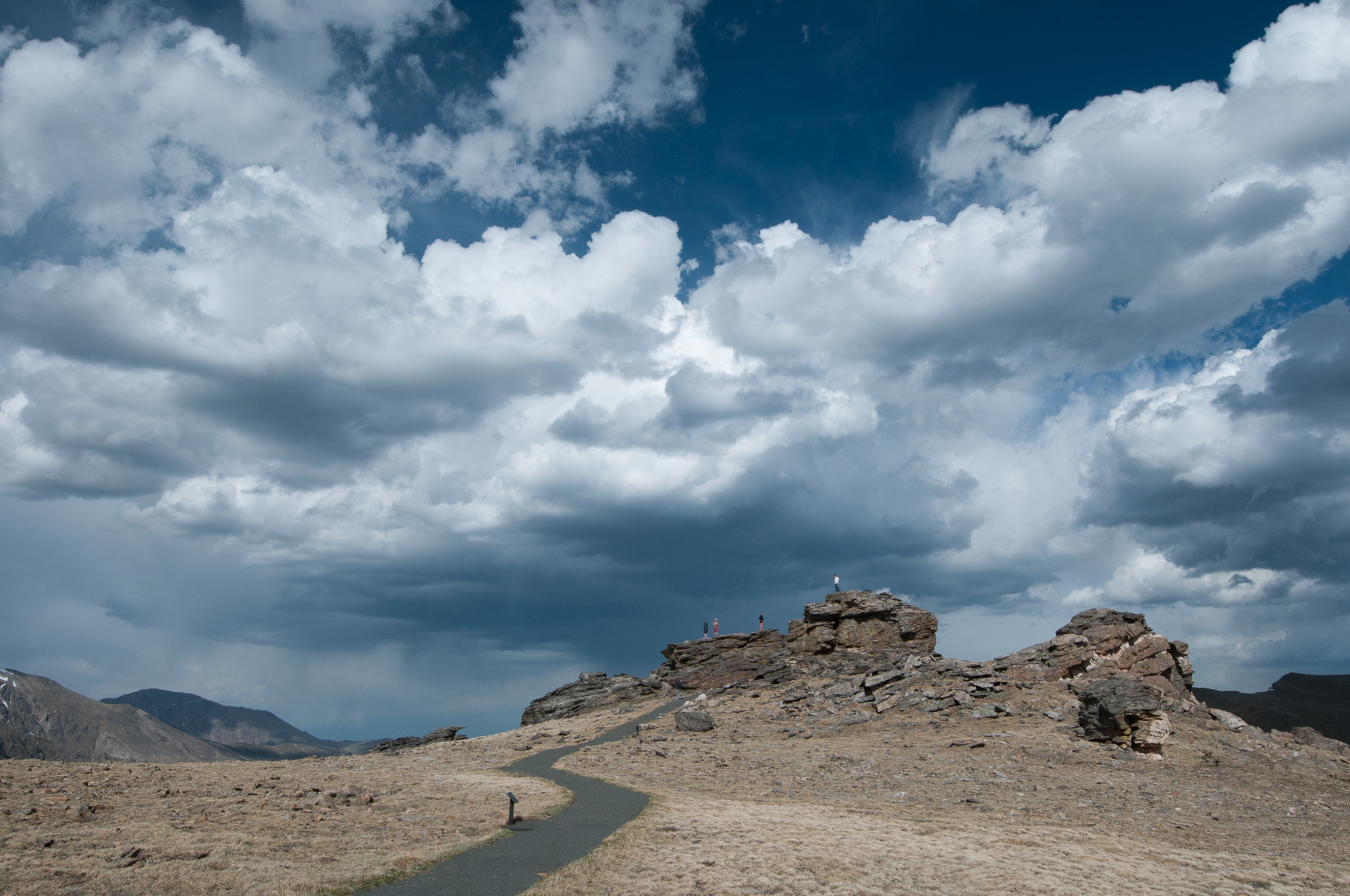

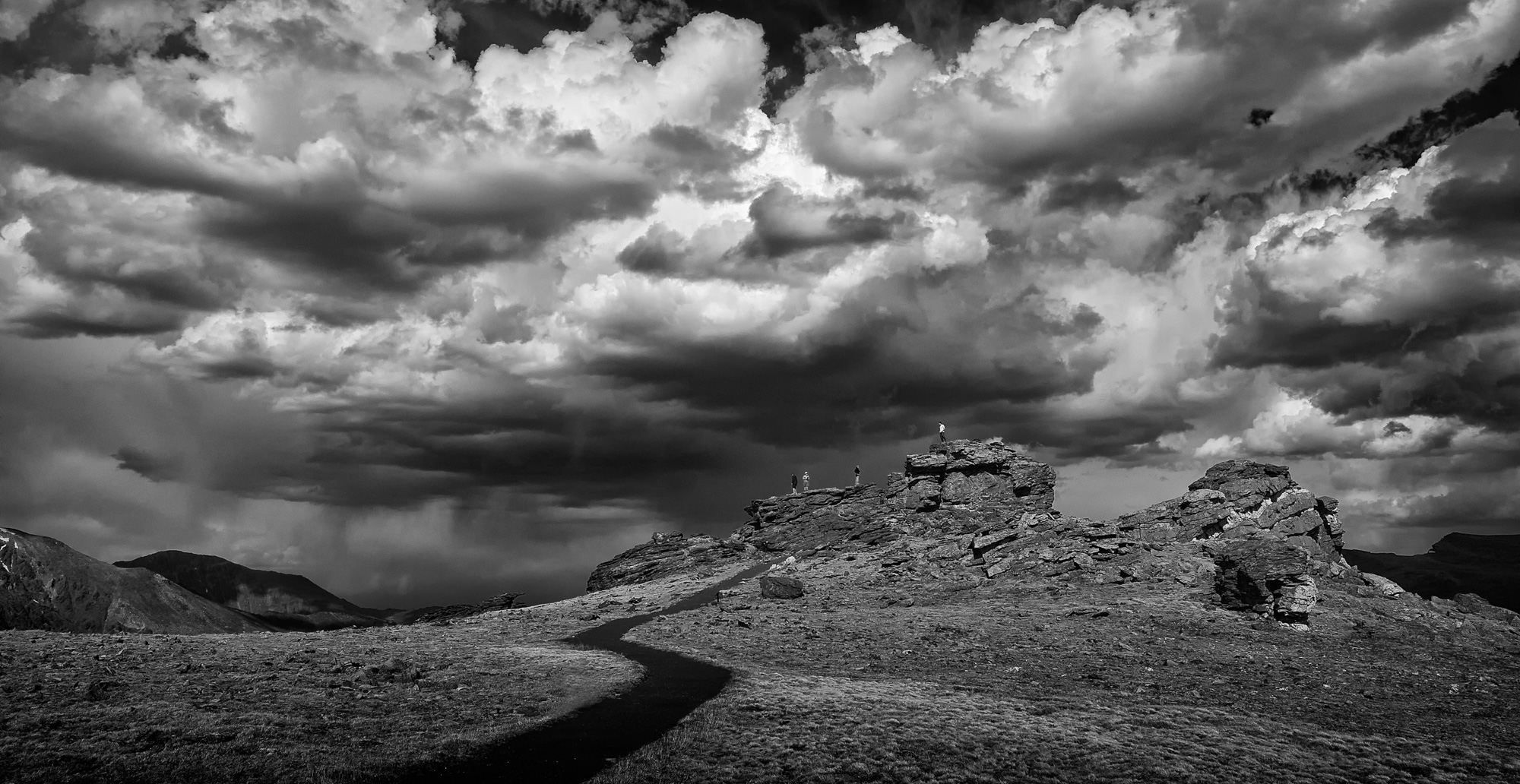
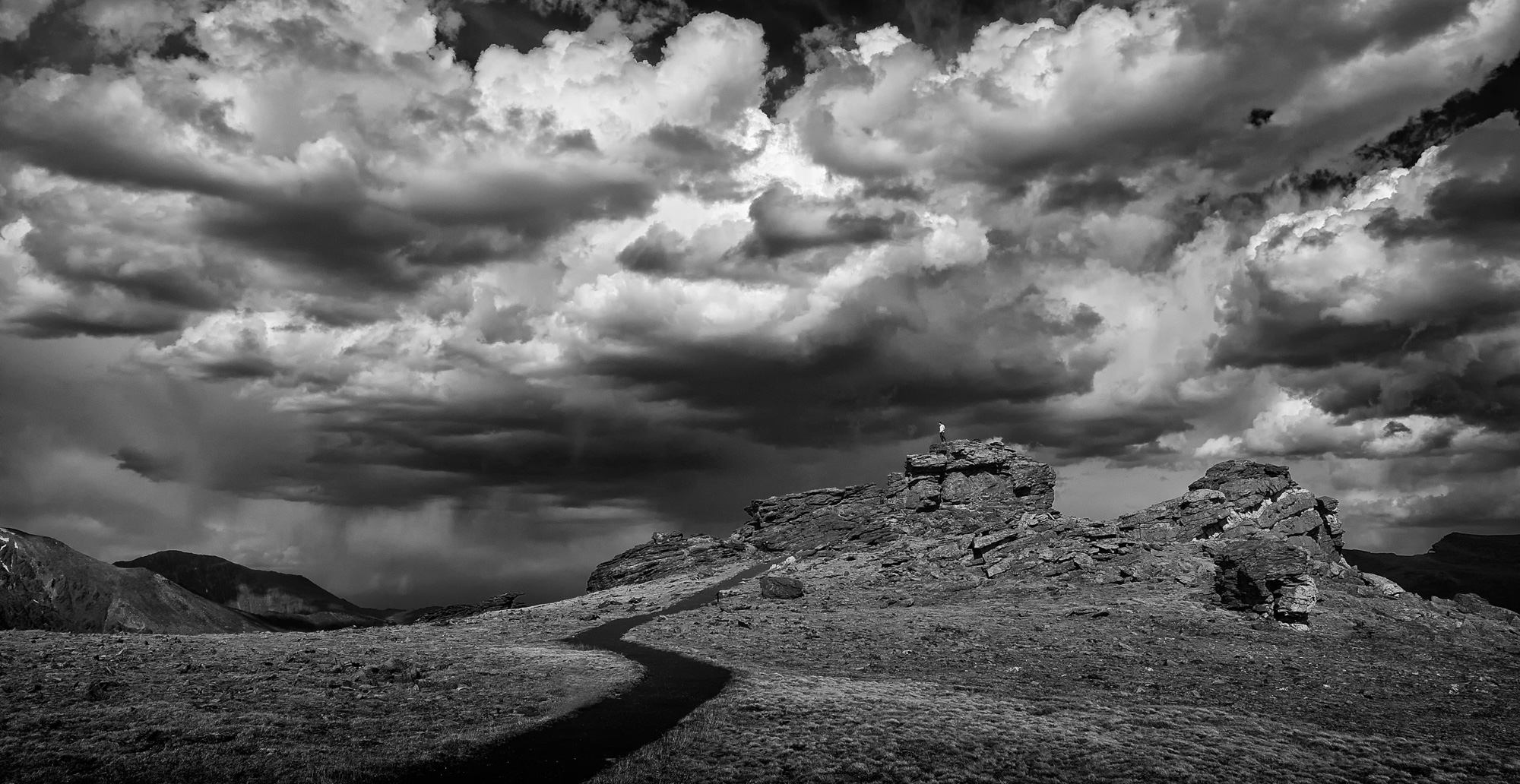
Let me know your thoughts. Would you have processed it differently? I ask myself this question all the time and will occasionally return to an image and refine or reprocess it. Do you ever reprocess your own images?
Do you enjoy these posts?
Sign up to receive periodic emails with updates and thoughts. Don’t worry, I won’t spam you. And please consider purchasing artwork or products from my online store, and using my affiliate links in the sidebar to the right when shopping online.
I appreciate your support!
